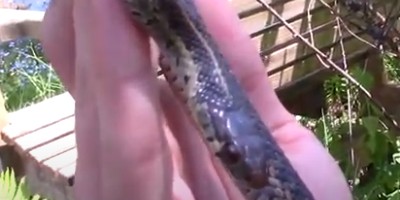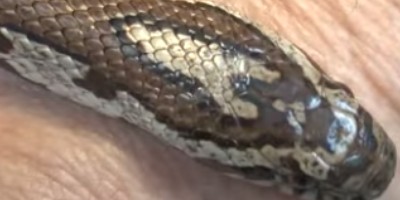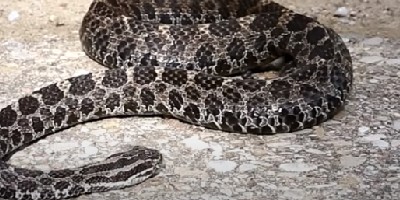
Welcome to pittsburghsnakes.com! I am David, a snake enthusiast living in Pittsburgh, PA. Many people don't know that Pittsburgh is in fact full of snakes! You just need to know where to find them - they can often be shy and elusive. Some Pennsylvania snake species are more common outside of the city limits, in different parts of Allegheny County PA, but many types of snakes are indeed common in the more urban parts of Pittsburgh. This guide is meant to help educate you about the beautiful snakes of Pittsburgh, and to help you identify the most common snakes of Pittsburgh, as well as the venomous snakes of Pittsburgh that you should learn to recognize and avoid. If you want more detail, click here for my complete list of ALL snake species in Pittsburgh. Remember the following:
- Most snakes of Pittsburgh are harmless and don't want to encounter you
- Venomous snakes exist but are uncommon in Pittsburgh, Pennsylvania
- Snakes eat rats and mice and are a valuable part of the Pennsylvania ecosystem
- Never kill a snake - if you leave a snake alone, it will leave you alone.
Common Snake Species in Pittsburgh
 Eastern Garter Snake:
The eastern garter snake (Thamnophis sirtalis) is a widespread species found throughout North America. They like moist, grassy environments but can be found away from water. They can be found in populated areas where there is cover (debris, boards, logs, vegetation). They are not venomous.
Adult eastern garter snakes are typically 20-28 inches in length. They usually have three yellow longitudinal stripes down a dark body. A few have a checkered pattern with light stripes or reddish body color. They are active both day and night and throughout the year. They are common and not a protected species.
Eastern Garter Snake:
The eastern garter snake (Thamnophis sirtalis) is a widespread species found throughout North America. They like moist, grassy environments but can be found away from water. They can be found in populated areas where there is cover (debris, boards, logs, vegetation). They are not venomous.
Adult eastern garter snakes are typically 20-28 inches in length. They usually have three yellow longitudinal stripes down a dark body. A few have a checkered pattern with light stripes or reddish body color. They are active both day and night and throughout the year. They are common and not a protected species.
 Eastern Milk Snake:
The eastern milk snake (Lampropeltis trangulum) is a nearly universal species that can be found from Canada, throughout much of the United States, and into Mexico and Ecuador. They are typically found in fields, woodlands, and rocky hillsides but like dark places where they can take cover, such as trash piles and basements. They are not venomous and even are kept as pets.
Eastern milk snakes have a distinctive pattern of light to reddish-brown bands that are bordered by a thin black line on a gray to light brown to red background. They are often mistaken for the more dangerous copperhead snake. Adult eastern milk snakes average 24 to 52 inches in length. They are primarily nocturnal.
Eastern Milk Snake:
The eastern milk snake (Lampropeltis trangulum) is a nearly universal species that can be found from Canada, throughout much of the United States, and into Mexico and Ecuador. They are typically found in fields, woodlands, and rocky hillsides but like dark places where they can take cover, such as trash piles and basements. They are not venomous and even are kept as pets.
Eastern milk snakes have a distinctive pattern of light to reddish-brown bands that are bordered by a thin black line on a gray to light brown to red background. They are often mistaken for the more dangerous copperhead snake. Adult eastern milk snakes average 24 to 52 inches in length. They are primarily nocturnal.
 Eastern Rat Snake:
The eastern rat snake (Pantherophis alleghaniesnsis) is endemic to the eastern and southeastern United States. They are typically found in meadows and open wooded areas but are attracted to areas with cover and any place with rodents to hunt. They are not venomous but do emit a foul musk when threatened that smells like and has the taste of poison.
Eastern rat snakes are the largest snake common to Pennsylvania. The adults average between 3 and a half feet and 7 feet long. The black scales on their back are shiny and they have light-colored bellies, with white scales at the throat and chin. The head is wider than the rest of the body. They brumate in cold months. Brumation is similar to hibernation but the snake occasionally awakens for activities like drinking water.
Eastern Rat Snake:
The eastern rat snake (Pantherophis alleghaniesnsis) is endemic to the eastern and southeastern United States. They are typically found in meadows and open wooded areas but are attracted to areas with cover and any place with rodents to hunt. They are not venomous but do emit a foul musk when threatened that smells like and has the taste of poison.
Eastern rat snakes are the largest snake common to Pennsylvania. The adults average between 3 and a half feet and 7 feet long. The black scales on their back are shiny and they have light-colored bellies, with white scales at the throat and chin. The head is wider than the rest of the body. They brumate in cold months. Brumation is similar to hibernation but the snake occasionally awakens for activities like drinking water.
Venomous Snake Species in Pittsburgh
 Northern Copperhead Snake:
The northern copperhead snake (Agkistrodon contortrix mokasen) is found in the United States from the Florida panhandle to as far north as Massachusetts and as far west as Nebraska. They are comfortable in both aquatic and terrestrial habitats and they like abandoned areas, rotting woodpiles, and construction sites. They are venomous and even newborns have fangs that are capable of injecting venom into a prey’s bloodstream. They are aggressive in self-defense.
Northern copperheads have camouflage of light tan to gray-brown with wide darker brown to red-brown bands which are narrow across its sides and narrow on its back. They have a distinctive triangular head that is flat. In the summer they are primarily nocturnal and they hibernate in the winter.
Northern Copperhead Snake:
The northern copperhead snake (Agkistrodon contortrix mokasen) is found in the United States from the Florida panhandle to as far north as Massachusetts and as far west as Nebraska. They are comfortable in both aquatic and terrestrial habitats and they like abandoned areas, rotting woodpiles, and construction sites. They are venomous and even newborns have fangs that are capable of injecting venom into a prey’s bloodstream. They are aggressive in self-defense.
Northern copperheads have camouflage of light tan to gray-brown with wide darker brown to red-brown bands which are narrow across its sides and narrow on its back. They have a distinctive triangular head that is flat. In the summer they are primarily nocturnal and they hibernate in the winter.
 Eastern Massasauga Rattlesnake:
The eastern massasauga rattlesnake (Sistrurus catenatus) is found in large parts of the eastern and Midwestern United States, and as far north as Ontario, Canada, and as far south as Mexico. They like wetlands and are secretive creatures, seeking out places to hide. They are naturally attracted to places like debris piles and rotted wood. They seek out prey like rodents. Their venom is more toxic than other rattlesnakes but they inject a smaller amount of it than other rattlesnakes. They are shy and rarely bite people.
The eastern massasauga rattlesnake is a thick-bodied, stocky snake with nine enlarged scales on its head. They are usually brownish gray with a geometric pattern of darker patches. They are active during the day and, during the summer, also during the evening. It is federally listed as threatened and, in Pennsylvania, as endangered.
Eastern Massasauga Rattlesnake:
The eastern massasauga rattlesnake (Sistrurus catenatus) is found in large parts of the eastern and Midwestern United States, and as far north as Ontario, Canada, and as far south as Mexico. They like wetlands and are secretive creatures, seeking out places to hide. They are naturally attracted to places like debris piles and rotted wood. They seek out prey like rodents. Their venom is more toxic than other rattlesnakes but they inject a smaller amount of it than other rattlesnakes. They are shy and rarely bite people.
The eastern massasauga rattlesnake is a thick-bodied, stocky snake with nine enlarged scales on its head. They are usually brownish gray with a geometric pattern of darker patches. They are active during the day and, during the summer, also during the evening. It is federally listed as threatened and, in Pennsylvania, as endangered.
If you're unsure, you can email me a photo of the snake at info@pittsburghsnakes.com and I will email you back with the snake's species. If you found a snake skin, read my Found a Skin? page, and you can email me a photo of the skin, and I'll identify the snake for you. If you need professional Pittsburgh snake removal help, click my Get Help page, or see the below website sponsor I found, who provides that service.
Remember, the term is not poisonous snakes of Pittsburgh, it's venomous snakes of Pittsburgh. Poison is generally something you eat, and venom is injected into you. That said, dangerous snakes are very rare in Pittsburgh. The few venomous snakes of Allegheny County are rarely seen. But they are commonly misidentified, so learn about all the snake species of Pittsburgh in order to correctly identify them. These snakes are usually also found in the surrounding towns of Bethel Park, Monroeville, Mount Lebanon, McKeesport, Moon, Sewickley, McCandless, West Mifflin, Penn Hills, Upper Saint Clair, South Park Township, Carnegie, Bridgeville, Coraopolis, Gibsonia, Tarentum, Fox Chapel, Wilkinsburg, Clairton, McKees Rocks, Braddock, Duquesne, Castle Shannon, Jefferson Hills, Ross Township, Oakmont, North Versailles, Plum, Homestead, Turtle Creek, Munhall, Elizabeth, Brentwood, East Pittsburgh, Baldwin, Swissvale, Oakdale, Millvale, Dormont, Springdale, Cheswick, Sharpsburg, Forest Hills, Crafton, Glassport, Franklin Park, White Oak, Etna, North Braddock, Aspinwall, and the surrounding areas.
Read our article about:
Humane Method of Removing the Snake
pittsburghsnakes.com domain and hosting costs made possible by the generous support of this sponsor:
